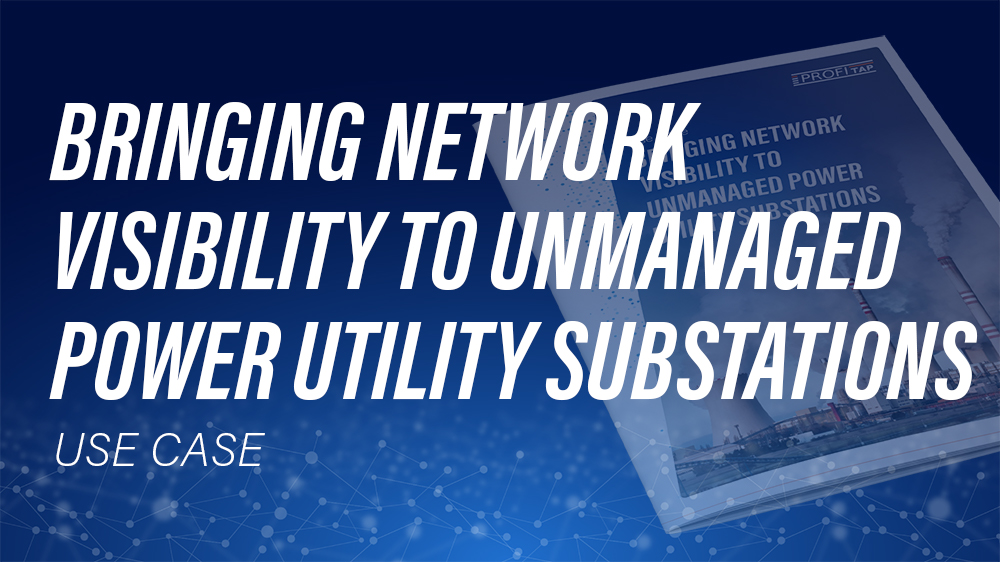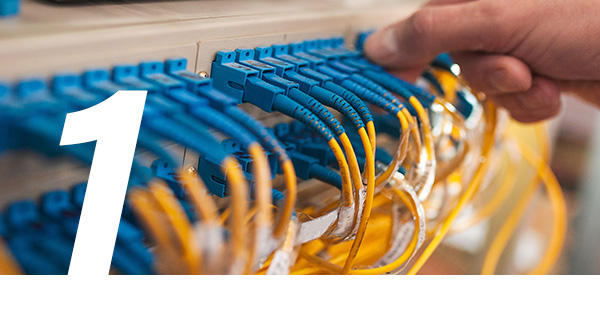Power and Utility Network Solutions
Monitoring and strengthening power utility networks to meet modern and future needsNew challenges, new risks
Streamlining operations, reducing costs, ensuring reliability to a constantly growing demand, monitoring remote locations, new environmental rules to be compliant with, and the implementation of new technologies: these are just a few forces that have placed new challenges on power utility networks. On top of it are the growing cyber risks, with the potential to damage a country’s power grid, causing widespread infrastructure failures.
Compliance with some specific industry standards is the best way to start facing some of these challenges. The NIST Cybersecurity Framework (NIST) and the NERC Critical Infrastructure Protection Plan (NERC) are the two most important industry security standards that apply to power utilities for cyber and operational safeguards. The NIST is built upon best practices implemented in various industry fields and could be considered as a voluntary practice, but highly recommended. On the other hand, the NERC is compulsory by all utilities generating or distributing electric power, oil, water, or natural gas. NERC’s specific areas of concern are security awareness, physical security, remote access connections, and incident response. But how about the requirements for a modern network infrastructure?
Monitoring power utility network infrastructures provides its own set of challenges:
- Achieving real-time network monitoring
- Detecting networking and operational issues before they cause downtime
- Preventing unplanned downtime due to equipment failure
- Remote access control
- Remote troubleshooting (intermittent) issues on hard to reach remote sites

Network monitoring to streamline the smart grid environment
An electrical grid, electric grid, or power grid, is an interconnected network of transmission lines, substations, transformers, and more, to deliver electricity from the power plant to any consumer, using a one-way interaction. Today’s power grid is the smart grid, introducing a two-way interchange where both electricity and information can be exchanged — in both directions — between the power utilities and the consumers. A smart grid could be defined as a complex network of networks, comprising both power and communication infrastructures, and an enormous quantity of intelligent electronic devices (IEDs). In the smart grid domain, different communication technologies and architectures are involved, that need to meet specific requirements, e.g., reliability, bandwidth, and security, depending on smart grid applications.
An electricity disruption such as a blackout can have a domino effect, involving a series of failures that can affect banking, communications, traffic, and security for an entire nation. How to ensure the control, performance, reliability, availability, and efficiency of any smart grid? Is it also possible to prevent a cyber-attack for such a complex network of networks? It all starts with visibility.
To gain full network visibility, the challenge could be faced in layers, by monitoring packet-level insights into the networks between power generation, distribution, and power consumers. Where to start?
Accessing the network traffic
Get a reliable, real-time overview of the network with physical and virtual TAPs placed at strategic points, and Bypass TAPs for an extra layer of security.
Managing & optimizing data flow
Build a visibility architecture with the help of Network Packet Brokers (NPB) to deliver actionable network data to monitoring and security tools.
Data capture and analysis
Leave no blind spots: get dedicated tools that enable monitoring on the spot, but also remotely, as well as back-in-time analysis. In particular, Deep Packet Inspection (DPI) allows drilling down into the metadata extracted from network packets to identify what protocols and applications are being used, who is using them, and from what devices. With this level of network traffic analysis, it is possible to detect the actual packets involved in client conversations and identify the root cause of technical or security issues.
Real-time network monitoring starts with high-quality infrastructures. Discover the Profitap portfolio, or request a quote for customized power and utility network monitoring infrastructure solutions.

Bringing network visibility to unmanaged power utility substations
Profitap was tasked by a leading power utility company in a South-central State in the USA to provide network visibility to a group of unmanaged power substations that are moving from analog to digital systems…
![]()



